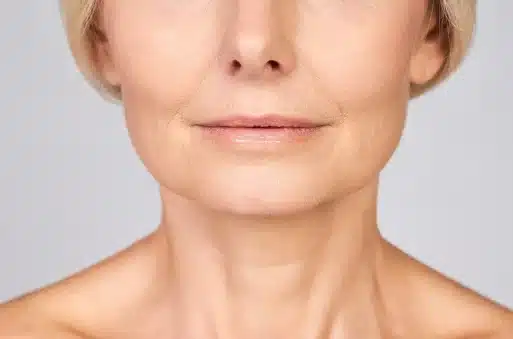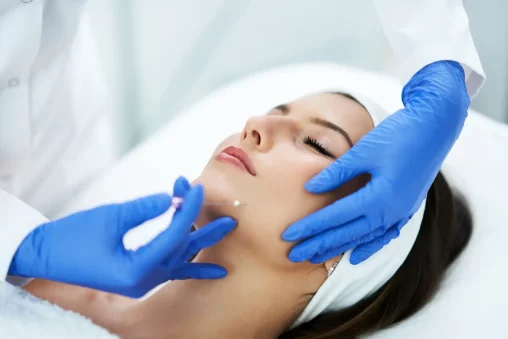Just a few innovations in aesthetic medicine have made as much quiet but undeniable impact as PDO thread lifts. What started years ago with surgical sutures has evolved into one of the most popular treatments for non-surgical skin tightening and facial rejuvenation. Today, polydioxanone (PDO) threads are a mainstream option for everyone who wants results without the downtime and risks of regular surgery.
Unlike more aggressive procedures, thread lifts are middle ground: enough to turn back the clock in a visible but natural way, yet subtle enough to avoid the telltale signs of “I’ve been to facelift surgery.” Their appeal lies in their versatility, so they can blend into combination therapies, from injectables to skin resurfacing treatments.
We take a deep dive into the world of PDO thread lifts — breaking down the science behind, how they work in real-world practice, what physicians should watch for, and the kinds of questions patients are asking more than ever before.
What Are PDO Threads?
Polydioxanone (PDO) threads are synthetic, biodegradable polymers originally created for use in cardiothoracic and other soft-tissue surgeries. Their remarkable tensile strength, flexibility, and excellent biocompatibility have made them a natural fit for aesthetic medicine.
In cosmetic procedures, different threads achieve skin tightening and rejuvenation through two synergistic mechanisms: the immediate mechanical lift created by the threads themselves and the gradual biological lift driven by the body’s healing response.
How exactly do they work? After being placed into the dermis or subdermal fat layer, PDO threads initiate a highly localized, controlled inflammatory reaction. This triggers a cascade of biological events: fibroblasts become activated, leading to a significant increase in the synthesis of Type I and Type III collagen. Simultaneously, the production of elastin and hyaluronic acid is boosted.
A variety of PDO thread designs have been made to address different clinical objectives and anatomical areas. Most popular are:
- Mono Threads: Smooth, filament-like threads without barbs, primarily intended for stimulating collagen production rather than lifting.
- Cog Threads: These threads are studded with barbs or hooks that latch onto the subcutaneous tissues.
- Screw Threads: Comprising one or two threads intertwined around the insertion needle, screw threads create a volumizing effect.
- Embossed/Spiral and Mini-Cannula Threads: Newer designs such as embossed or spiral threads incorporate surface texturing or specialized shapes to increase tissue engagement while minimizing trauma.
Indications and Ideal Candidates
PDO threads are versatile in application:
- Facial zones: midface, jawline (jowls), nasolabial folds, marionette lines, brows, and neck.
- Extra-facial areas: knees, upper arms, and even the abdominal region (particularly in postpartum patients.)
Ideal candidates are typically aged 30–55 with mild to moderate skin laxity and good tissue integrity. It’s not a replacement for rhytidectomy in cases of severe ptosis. Key contraindications include active skin infections, autoimmune diseases, bleeding disorders, or keloid tendency. According to the American Society for Dermatologic Surgery, proper patient selection is the strongest predictor of long-term satisfaction so be very careful.
The Procedure: Step-by-Step
A thorough and individualized assessment before non-surgical facelift includes Fitzpatrick skin typing to anticipate potential pigmentary responses, elastosis grading to measure skin quality and resilience, and, in some practices, advanced 3D imaging for precise documentation of baseline topography.
In terms of patient preparation, several pre-procedural modifications are required to minimize the risk of complications. Patients are instructed to discontinue anticoagulant medications and omega-3 fatty acid supplements at least five days before the procedure, pending physician approval. Alcohol consumption should be avoided for at least 48 hours prior to the appointment. A comprehensive informed consent process must be conducted, covering not only the aesthetic objectives and procedural details but also a frank discussion of possible adverse effects.
Procedures
On the day of the procedure, local anesthesia is administered, usually lidocaine with or without epinephrine. Once adequate anesthesia is confirmed, the practitioner plans and marks vector lines.
PDO threads are introduced into the dermis or subdermal plane either through blunt-tipped cannulas, favored for their lower risk of vascular injury and bruising, or sharp needles when greater precision or depth penetration is needed. The choice between the two instruments depends on the treatment area, skin thickness, and clinical goals. Cog threads are often anchored into deep supportive structures such as the temporal fascia when lifting the midface or jawline.
The entire procedure is generally completed within 30 to 60 minutes, depending on the complexity and the number of threads required.
Post-Procedure Care
Patients are advised to refrain from excessive facial movements such as yawning widely, chewing tough foods, or vigorous laughing for at least one week to prevent thread displacement. Activities that involve external facial pressure (dental work, facials, or massages) should also be postponed during this initial healing window. Sleeping in a prone position must be avoided.
Benefits of PDO Thread Lifts
What sets PDO thread lifts apart is their unique dual mechanism: immediate mechanical lifting combined with longer-term biological rejuvenation. Skin looks tighter, smoother, and more sculpted almost immediately after treatment, with continued improvements as collagen production ramps up over the following months. When combined with other treatments like hyaluronic acid (HA) fillers or collagen-stimulating injectables such as poly-L-lactic acid (PLLA), the effects can be even more impressive. Threads create structure and lift, while complementary treatments enhance volume and skin quality.
PDO thread lifts fit perfectly into today’s demand for low-downtime aesthetic procedures. Most patients are back to work and social activities within 24–48 hours, experiencing only minor swelling or bruising. Because the procedure avoids general anesthesia and surgical excision, it’s a safer choice for those who might not be candidates for traditional surgery due to medical reasons. Additionally, PDO threads can be adjusted based on individual features.
Potential Side Effects
Temporary side effects such as mild swelling (edema), bruising (ecchymosis), and redness (erythema) are common and occur in about 20–30% of patients. These symptoms usually peak within the first 48 hours and resolve without intervention. Occasionally, minor puckering or dimpling at the thread entry or exit points can be seen, but these smooth out as the skin settles and the threads integrate.
Although rare (with an incidence below 2%), complications such as infection, thread migration, granuloma formation, or vascular compromise can happen. There is no procedure that is 100% safe and without potential side effects.
Longevity and Maintenance
Although PDO threads themselves are absorbed by the body within approximately six months, the collagen matrix they stimulate can maintain skin firmness and lift for up to 12–18 months, so it provides results longer than most other non-invasive treatments. The durability of results is also influenced by the type and thickness of thread used, patient age, lifestyle habits (especially smoking or sun exposure), and metabolic rates.
To sustain and even build upon results, many practitioners recommend annual maintenance sessions. Combining thread lifts with treatments like radiofrequency (RF) microneedling or platelet-rich plasma (PRP) can further amplify collagen production and skin quality over time.
PDO Thread Lifts vs. Other Aesthetic Procedures
Fillers are excellent for restoring lost volume and neuromodulators like botulinum toxin are great for softening dynamic wrinkles, yet neither truly lifts sagging tissue. Fillers can sometimes help camouflage early sagging, but if too much product is used in an attempt to lift, it can lead to a puffy, unnatural look — especially around the cheeks and lower face.
This is where PDO threads really shine. They physically lift and reposition the skin. Instead of simply filling, threads create natural tension and support.
When used together — threads for lift, fillers for volume restoration, and neuromodulators for smoothing lines — you can achieve the best results.
Wrapping Up
The evolution of PDO thread lifts reflects something bigger happening in aesthetic medicine: a move toward treatments that respect the natural architecture of the face instead of an unnatural appearance often connected with facelifts 20 or 30 years ago. But don’t get us wrong, improvements with PDO threads are 100% real and visible, just look natural.
No longer experimental, and certainly not a compromise, PDO threads have proven they can deliver lasting results when placed in skilled hands.
For practitioners, being able to offer a lift without the disruption of surgery is certainly very good for business plus it aligns with what most patients want.
Frequently Asked Questions (FAQs)
Can PDO threads be used safely in patients with a history of dermal fillers or previous facelift surgery?
Yes, but it requires individualized planning. Threads can complement previous treatments, but tissue density, fibrosis, and previous vector changes must be checked carefully.
Are there specific pre-treatment lab tests or blood panels recommended before PDO thread procedures?
Routine lab tests aren’t mandatory, but screening for coagulation profiles and inflammatory markers may be advisable in some cases. Patients on anticoagulants or with autoimmune conditions require additional clearance. Always rule out local or systemic infection before treatment.
How does skin phototype (Fitzpatrick scale) influence outcomes or complication risks with PDO threads?
Darker phototypes (IV–VI) have a slightly higher risk of post-inflammatory hyperpigmentation if trauma occurs during insertion. However, when threads are placed properly in the subdermal plane, skin tone has minimal impact on efficacy.
What is the role of ultrasound or Doppler guidance in PDO thread placement?
Ultrasound and Doppler can help map vascular structures and avoid critical arteries in areas like the temple or midface. While not always used, it is becoming more common in complex or high-risk cases.
Can PDO threads contribute to lymphatic drainage or edema reduction in facial tissues?
Indirectly, yes. By improving tissue structure and skin tension, threads enhance microcirculation and lymphatic flow. Yet, they are not a primary treatment for lymphatic concerns and should be used in conjunction with appropriate drainage therapies.
How soon after laser resurfacing or deep chemical peels can PDO threads be safely introduced?
A minimum of 4–6 weeks is generally recommended after ablative treatments, once the epidermal barrier is fully restored. Threads should never be placed into inflamed, healing, or compromised skin.
References
Lots TCC. Effect of pdo facelift threads on facial skin tissues: An ultrasonographic analysis. J Cosmet Dermatol. 2023 Sep;22(9):2534-2541. doi: 10.1111/jocd.15761. Epub 2023 May 2. Erratum in: J Cosmet Dermatol. 2025 Jan;24(1):e16596. doi: 10.1111/jocd.16596. PMID: 37128828.
Unal M, İslamoğlu GK, Ürün Unal G, Köylü N. Experiences of barbed polydioxanone (PDO) cog thread for facial rejuvenation and our technique to prevent thread migration. J Dermatolog Treat. 2021 Mar;32(2):227-230. doi: 10.1080/09546634.2019.1640347. Epub 2019 Jul 15. PMID: 31267809.
Ali YH. Two years’ outcome of thread lifting with absorbable barbed PDO threads: Innovative score for objective and subjective assessment. J Cosmet Laser Ther. 2018 Feb;20(1):41-49. doi: 10.1080/14764172.2017.1368562. Epub 2017 Dec 4. PMID: 28863268.
Khan G, Kim BJ, Kim DG, Park E. Retrospective study of the absorbable braided polydioxanone threads’ usefulness in the aged lower eyelids’ rejuvenation. J Cosmet Dermatol. 2022 Nov;21(11):5952-5956. doi: 10.1111/jocd.15257. Epub 2022 Aug 8. PMID: 35866335.



0 Comments